【CCNP ENCOR OCG】CHAPTER 2》Spanning Tree Protocol
目录
“Do I Know This Already?” Quiz
Foundation Topics
Spanning Tree Protocol Fundamentals
802.1D Port States
Spanning Tree Path Cost
Root Bridge Election
Locating Root Ports
Locating Blocked Designated Switch Ports
Verification of VLANs on Trunk Links
STP Topology Changes
Key Topics
802.1D port types
STP Key Terminology
Root Bridge Election
Locating Root Ports
STP Topology Changes
Rapid Spanning Tree Protocol
RSTP (802.1W) Port States
Building the RSTP Topology
Key Terms
configuration BPDU
hello time
Practice Test
白皮书主要涉及:802.1D
“Do I Know This Already?” Quiz
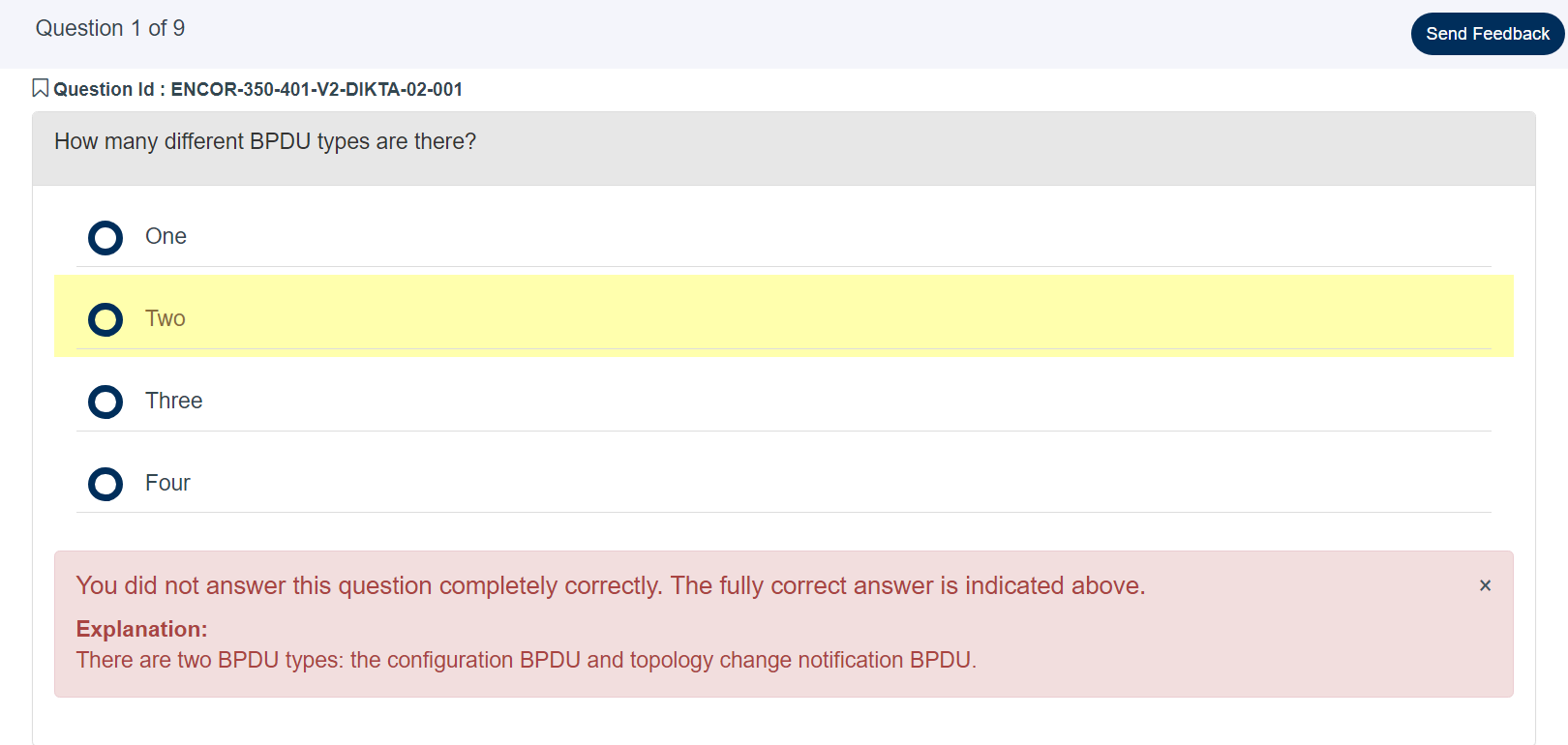
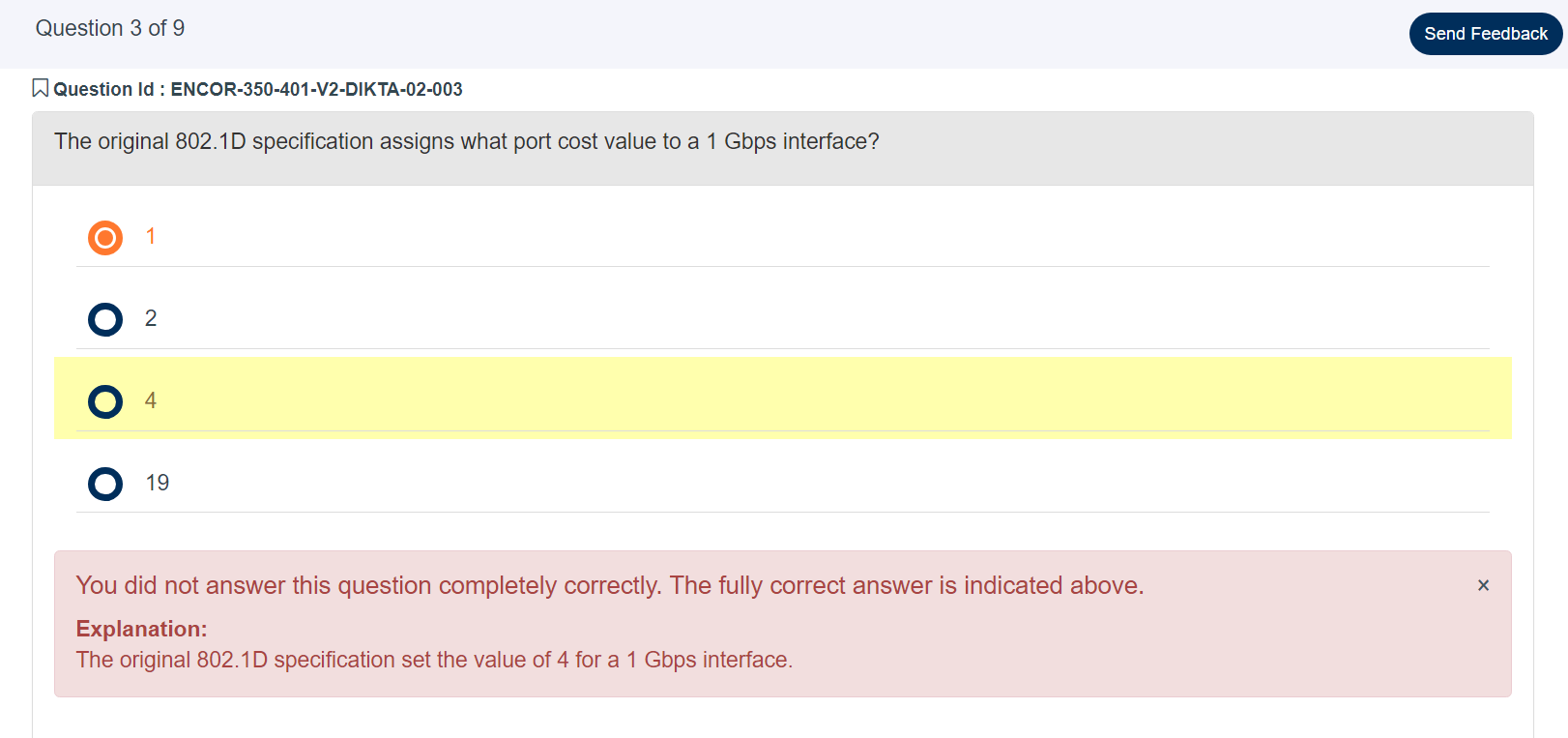

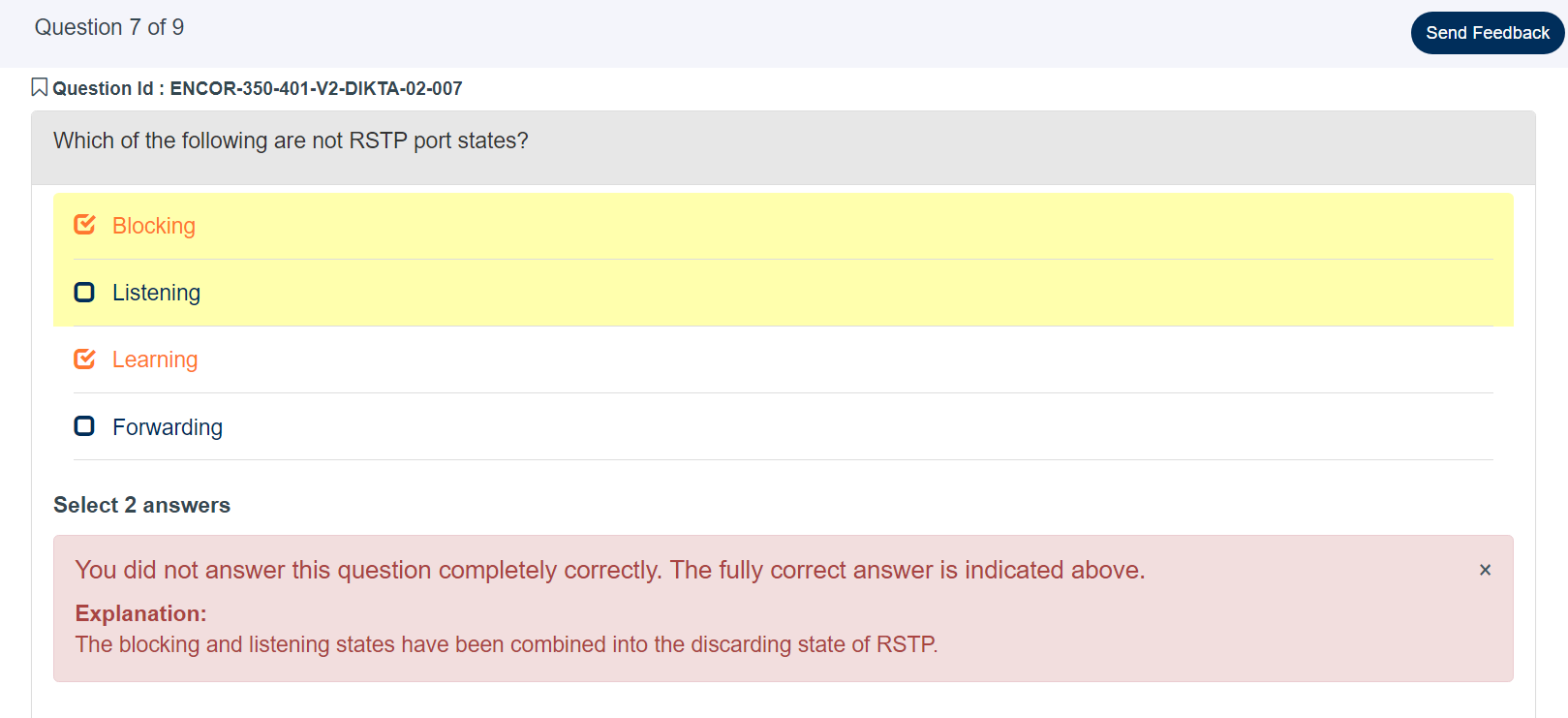

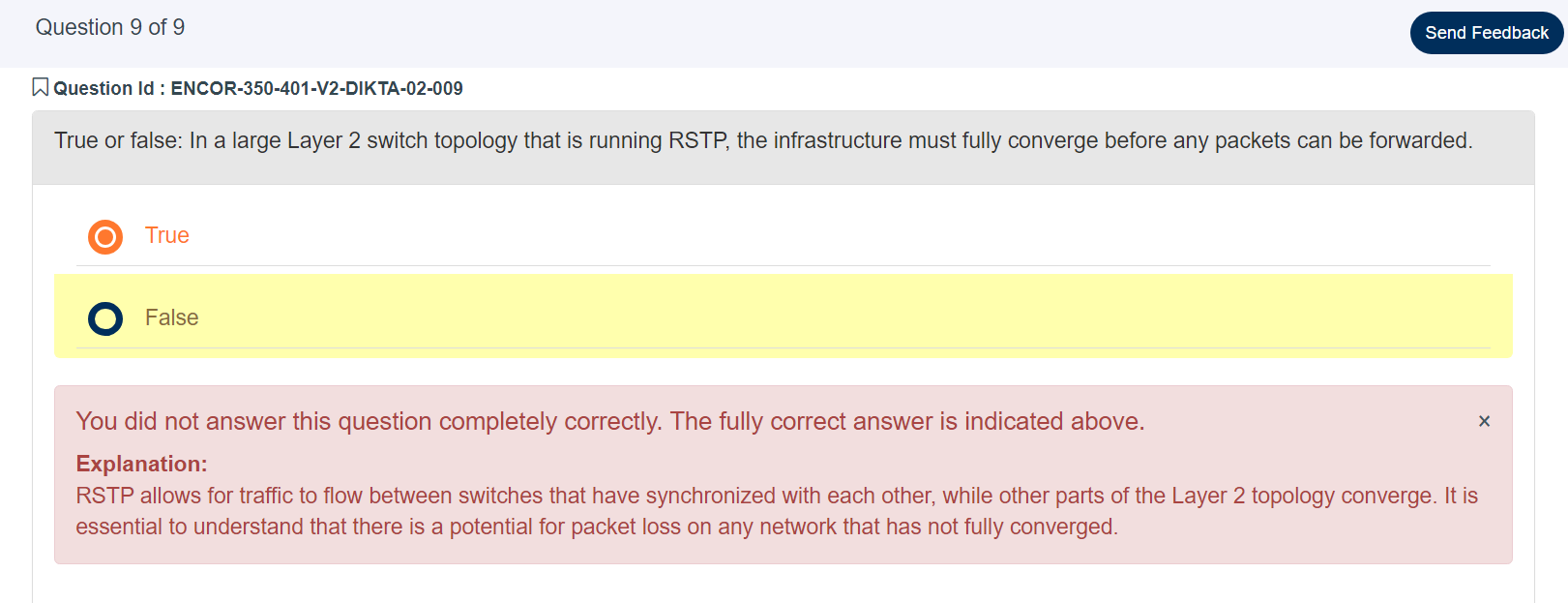
Foundation Topics
Spanning Tree Protocol Fundamentals
802.1D Port States
Six states: Disabled (administratively off, that is, shutdown)、Blocking-listening-learning-Forwarding、Broken
Spanning Tree Path Cost
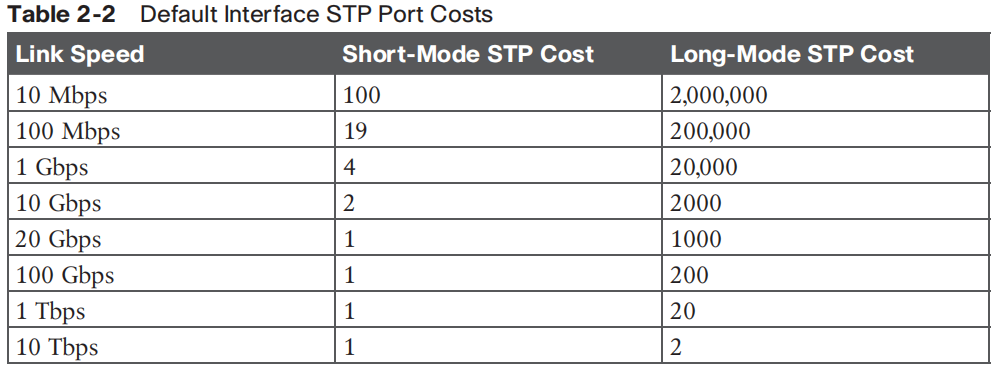
Root Bridge Election

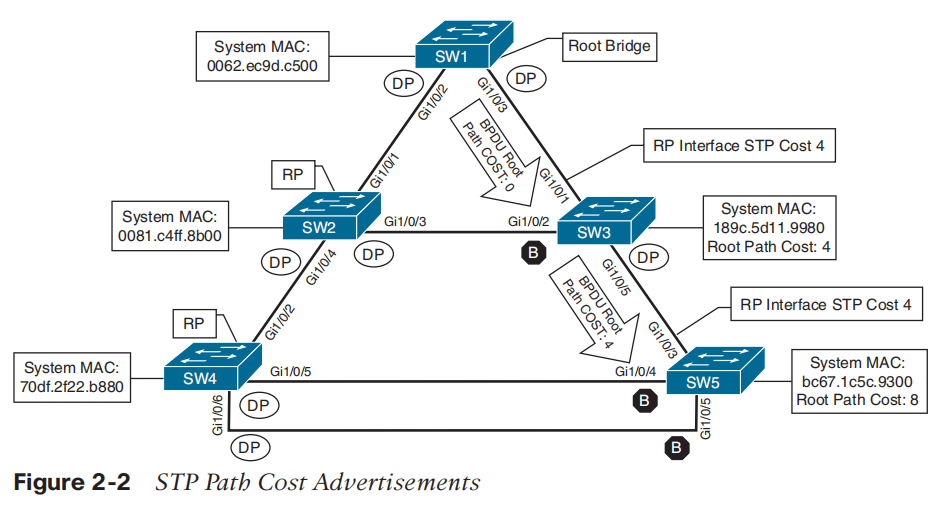
Locating Root Ports
Locating Blocked Designated Switch Ports
port’s STP state. contains "root bridge’s information" and "local bridge’s information".
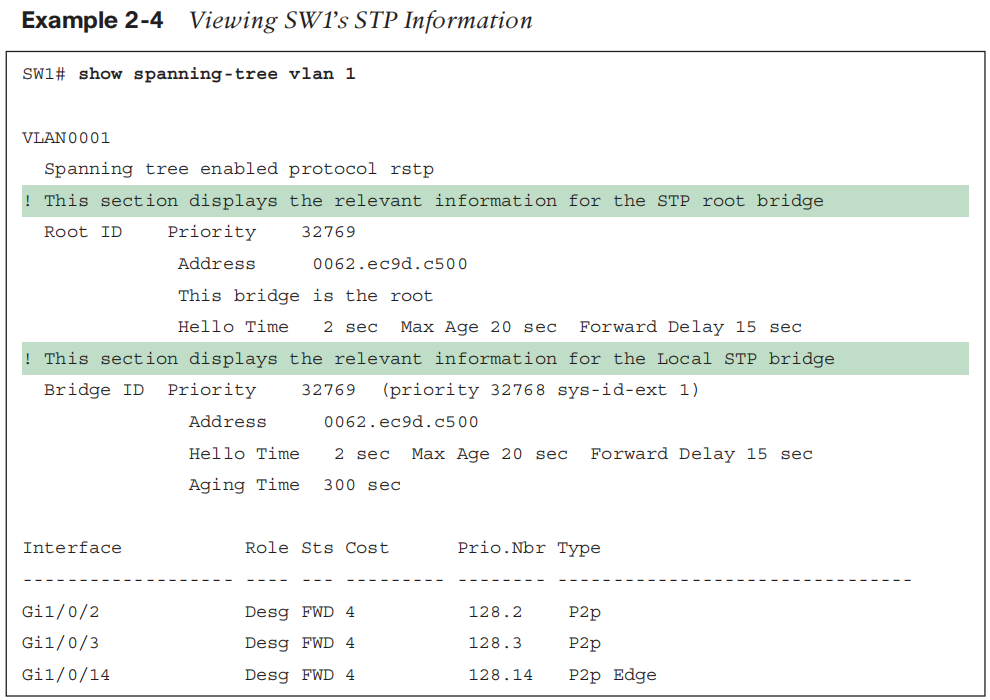
Verification of VLANs on Trunk Links
STP Topology Changes
In a stable Layer 2 topology, configuration BPDUs always flow from the root bridge toward
the edge switches.
The switch that detects a link status change sends a topology change notification (TCN)
BPDU toward the root bridge, out its RP.
Upon receipt of the TCN, the root bridge creates a new configuration BPDU with the Topol ogy Change flag set, and it is then flooded to all the switches.When a switch receives a con figuration BPDU with the Topology Change flag set, all switches change their MAC address
timer to the forwarding delay timer (with a default of 15 seconds). This flushes out MAC
addresses for devices that have not communicated in that 15-second window but maintains
MAC addresses for devices that are actively communicating.
The MAC address timer is then reset to normal (300 seconds by default) after the second configuration BPDU is received.
Topology changes are seen with the command show spanning-tree [vlan vlan-id] detail on a
switch bridge.
Key Topics
802.1D port types
STP Key Terminology
Root Bridge Election
Locating Root Ports
STP Topology Changes
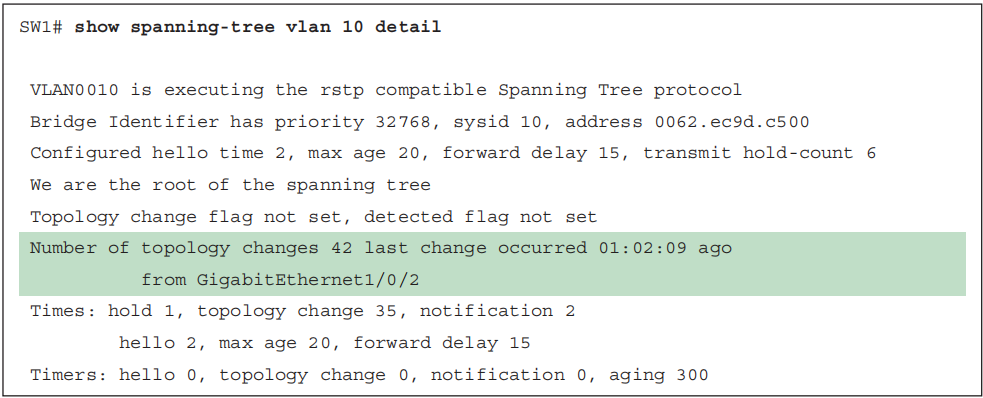
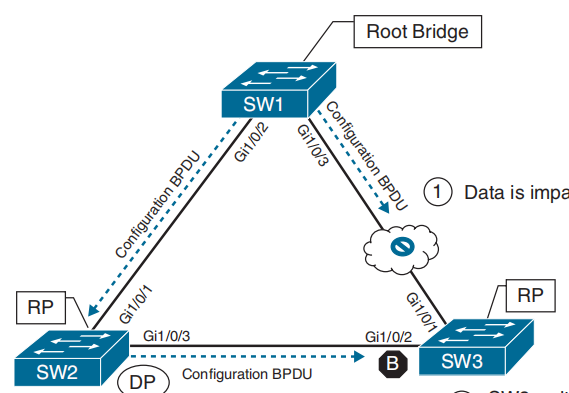
Rapid Spanning Tree Protocol
RSTP (802.1W) Port States
Building the RSTP Topology
Key Terms
configuration BPDU
The BPDU that is responsible for switches electing a root bridge and communicating the root path cost so that a hierarchy can be built.
hello time
The time interval for which a BPDU is advertised out of a port.
Practice Test
Which of the following best describe the BPDUs used in 802.1D?
-
There are two types of BPDUs.
-
802.1D and 802.1W use the same BPDU format.
-
BPDUs are sent at each 2-second hello interval, even if no BPDU is received on the root port.
-
Configuration BPDUs identify the root bridge.
Select 2 answers
Explanation:(14)
802.1D defines two BPDU types, the configuration BPDU and the topology change notification (TCN) BPDU. Several important fields are included in configuration BPDUs, including the root bridge identifier, timers, and cost to the root. 802.1D bridges only forward BPDUs from the root port, where 802.1W bridges generate a BPDU at each hello interval.
2.RSTP对BPDU格式进行了少量更改。 802.1D中只定义了两个标志:拓扑更改(TC)和TC确认(TCA)。但是,RSTP会使用剩余的六个标志位元组位来执行:
-
对产生BPDU的连线埠的角色和状态进行编码
-
处理建议/协定机制
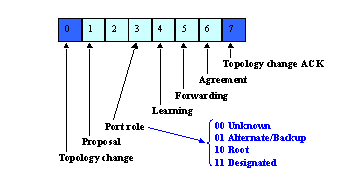
3.非根交换机转发来自根的 Hello;根根据根配置的 Hello 计时器发送这些 Hello。只有 Root 创建这些 BPDU。此外,在 STP 中,只有指定端口才会发送 BPDU。在RSTP中,所有端口都会发送它们
